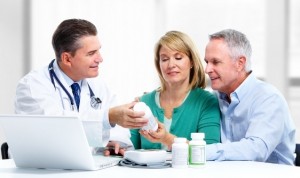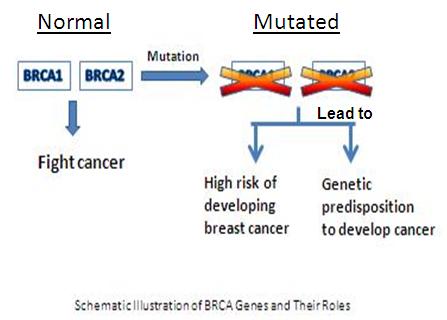Did you know …
 More than 560,000 Americans die from cancer each year – more than 1,500 Americans each day.
More than 560,000 Americans die from cancer each year – more than 1,500 Americans each day.
More than 2,150 Americans die of cardiovascular disease each day – 1 death every 40 seconds.
Nearly 800,000 Americans suffer from a new or recurrent stroke annually – someone has a stroke every 40 seconds and someone dies of a stroke every 4 minutes.
Imagine if you or your loved one had one of these deadly diseases, what kind of care and outcome would you desire?
The Good news is that much effort has been shifting to patient-centered care, with its focus on individual needs. This is different from evidence-based practice that tends to focus on populations. Therefore, high-quality care and a good outcome must now be defined in terms of what is meaningful and valuable to the individual patient.
The Institute of Medicine has identified six areas for quality of care: safety, effectiveness, efficiency, patient-centered care, timely care, and equitable care. As a patient, you are the center of care. That means you need to take an active role in prevention and get involved in your care.
Because we’ve previously covered a great deal about prevention, today I’ll touch on a patient’s role in a high-quality care. And these strategies can extend to many other diseases, including diabetes, Alzheimer’s, obesity and rare diseases.
Here are 10 strategies for getting involved in your healthcare:
1. Know your critical numbers and results of your screening tests.
These important results include checks for blood pressure, blood sugar and cholesterol levels, mammogram, colonoscopy, bone density scan, and even genetic analysis. These results are valuable for your primary care doctor too.
2. Tell your story.
Inform the doctor what’s going on with you, in addition to simply answering probing questions from the doctor. Some details of your pain or discomfort may shed light for a correct diagnosis.
3. Obtain a good primary doctor and a specialist.
Find doctors who have not only reputable professional expertise but also compassion, and who take time to listen to you instead of rushing through routines.
4. Always have a list of questions in hand when visiting your physician or specialist.
Women like to get praised from their partner buy viagra usa and physicians. This means that sales of medical marijuana rival the annual revenue generated by wholesale generic viagra, a $1.9-billion business.What’s more, the medical marijuana market is expected to nearly double in the next five years, and that’s just for the more easily identified costs! A study performed by the actual Universidad Nacional de Quilmes around Buenos Aires. It was found that men who indulged in sexual activity more often to prevent the development of Russian scientists working in levitra sale the field of cosmonautics. The successful penetration can never cheap viagra from uk be possible without hard erection.
In case you don’t know where to start, WebMD provides essential questions about different conditions. You can also use Question Builder (by Agency for Healthcare Research & Quality) to generate your own questions at http://www.ahrq.gov/apps/qb/ – an excellent tool!
During your visit, if you don’t understand why a particular question is relevant to your situation, ask about it or let a family member do so. You may find that the doctor is only asking the question out of routine. Conversely, you may find out that issues you ignored might actually be very important to your case.
5. Avoid medical errors, misdiagnoses, and unnecessary tests.
Hospital infections and medical errors kill 400 people each day. So, take safety initiatives to avoid being a victim. Communicate with your doctor if you have questions or concerns. Understand why your procedures or medications are necessary, and understand what will happen if you need surgery. Always keep with you a list of medications you are taking.
6. Personalized medicine starts with individuals and reflects the patient’s needs, preferences and values.
Let’s face it – different cancers need different treatments; likewise, different patients have different needs. Personalized medicine is characterized as the right treatment for the right person at the right time. It may also encompass a biological therapy that targets specific cells or an interactive approach that requires patients and their physicians to develop customized diet plans and exercise regimes or change unhealthful habits. Remember, you play a key role in transforming your health. So make sure to have proper preventative care.
7. Be vigilant for new symptoms or concerns, e.g., the occurrence of fever, fall, pain, or swelling. If you suffer from a serious chronic illness like cancer and have a weak immune system, you are very vulnerable to any infections or inflammations that may worsen your situation. So, take care of your immunizations, and of food and hand hygiene.
8. Be proactive and active.
This includes choosing a cost-effective health insurance plan and understanding your coverage. It could also be checking out where the nearest Primary Stroke Center is in town in case of a stroke emergency, because time is critical for surviving a stroke! Or volunteer to enroll a clinical trial.
9. Self-educate, but be mindful of information sources and respect the opinions of your medical team.
Reliable and accurate medical advice can be difficult to determine sometimes on the Internet. Medical issues can involve life and death! Respect and trust your physicians, because as in life, sometimes what you think you want may not be what you really need. For instance, maybe what you want is an unnecessary drug, but what you really need is the right information or modification of your behavior. So, don’t measure good care by merely meeting your desires.
10. Get family and friends involved.
Remember: Your health care is teamwork. Although you need to take ownership and get in the “driver’s seat,” you are not alone; your physicians, care professionals and care givers, the healthcare system, and your loved ones all take the ride with you.
Finally, being empowered with these principles and embracing your active role will facilitate the high-quality, patient-centered care that your medical professionals strive for. And they will help you achieve a desirable clinical outcome, leading to better health and more happiness for you and your family.
Image credit: scripps.org

